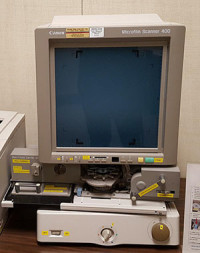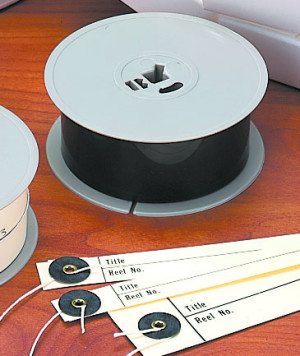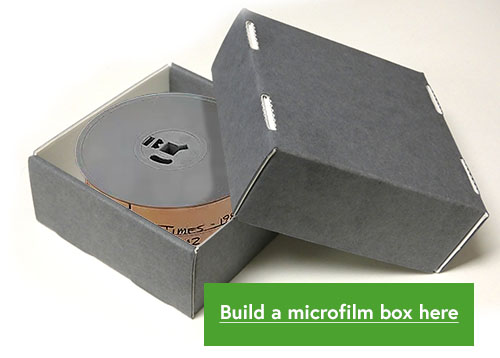How to store Microfilm
Microfilm was almost the internet of its day, allowing access or capture of large amounts of information stored in a compact format. In fact, it is still a current format although much less prevalent. Whilst digitisation has replaced microfilm in most cases there are still large archives and collections of microfilm containing data that is not available elsewhere. It means that it's important remaining microfilm reels are stored correctly to ensure they are available and preserved for many years and decades to come. So how do you store microfilm?
What is microfilm?

Microfilm Reader
Microfilm exists in more than one format and with different materials as the film base and image layer. Usually found on 16mm or 35mm reels or microfiche cards.
Nitrate - Older microfilms are likely to have been made from cellulose nitrate with a silver gelatin image process. This process was commonly used from c1935 up until the 1950s. They are incredibly flammable and emit harmful gases as they age and degrade. Degrading films could be dangerous and not suitable for storage.
Acetate - Because of the safety issues with cellulose nitrate bases, cellulose acetate was introduced as a safer media, it's also known as 'Safety Film'. Available as early as c1925 it's still used today. This type of film degrades and produces a distinctive acidic smell that is known as 'Vinegar syndrome'. There are products available to monitor for the early signs of degradation called A-D strips. Acetate film can be stored but must be protected and any film that has begun to break down must be removed from the collection. Vented or card boxes allow gases to escape that could otherwise build up and speed up deterioration caused by vinegar syndrome.
Polyester - More recent microfilm dated c1960 onwards on a polyester base is much more stable and if preserved correctly could last 100s of years. Polyester is used as an enclosure material in conservation too, it's a tested and trusted material that can last hundreds of years in the correct conditions.
What else causes damage to Microfilm?
Aside from the issues around the film base material, the image layer is also prone to damage. As the image is reduced to a fraction of the size of the original, any imperfections are exacerbated when blown up. Damage to the image layer can be called micro-blemishes or 'measles'. So what are the risks to the image layer?
- Dust and debris can infiltrate rolled film causing abrasions to the image layer. Polyester can carry a static charge and as a result, can attract dust to its surface.
- Airborne pollutants such as paint fumes, smoke/exhaust fumes, cleaning fluids and more can introduce damaging gases into the storage environment.
- Moisture and heat can cause some processes to oxidise
So what can you do to protect your microfilm?
A full enclosure like a box is therefore important and there is more than one benefit:
- Prevents ingress of dust and dirt which can spoil the image surface
- A buffered box can neutralise migrant acids that could be in the storage area which would otherwise damage the film over time
- Boxes provide protection from handling and accidental damage when transporting, or in storage
- Protection from UV light which could affect the image layer and speed up deterioration of the film base
- A box enclosure helps to buffer fluctuations in temperature and humidity (ideally store below 21 degrees centigrade in a RH level of around 40-50%)
- PAT passed boxes like ours have been tested to protect photographic materials
How to make a storage box for microfilm
We've made it really easy to make microfilm storage boxes.
- For an individual box for 16mm microfilm reel, (95mm x 95mm x 19mm)
- For an outer box to hold 11 x 16mm reel boxes (275mm x 105mm x 105mm)
- For an individual box for 35mm microfilm reel, (95mm x 95mm x 40mm)
- For an outer box to hold 6 x 35mm reel boxes (275mm x 105mm x 105mm)
We've matched the outer box sizes up for collections where a variety of 16mm and 35mm are present so they stack nicely. You can adjust the dimensions if you'd like to make a smaller box.




